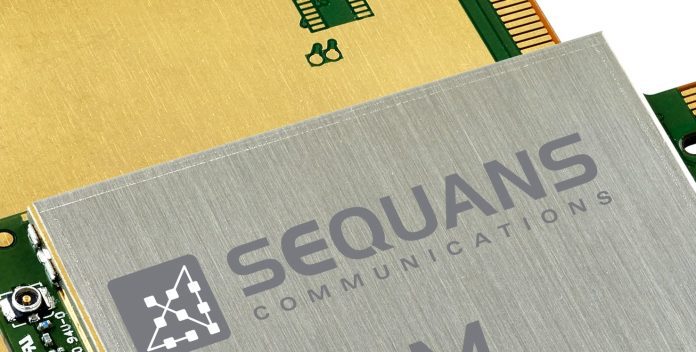IoT chipset hardware firm Sequans has worked with digital security outfit Thales to release a new integrated SIM (iSIM) solution, with support for the latest GSMA SGP.31/.32 eSIM IoT specifications, on Sequans’s dual-mode LTE-M and NB-IoT Monarch 2 chip. The new version of the GSMA standard introduces a more advanced remote SIM provisioning architecture for management of large fleets of IoT devices.
It simplifies logistics, device installation, and connectivity cost. It improves the resilience of IoT connectivity and facilitates mobility applications, said Sequans in a statement. It said: “The specification] also provides crucially important business continuity for the entire life cycle of IoT devices, reducing risk when cellular networks change. With their new iSIM solution, Thales and Sequans aim to bring all these advantages to the cellular IoT market.”
Thales is providing the SIM system (OS) and remote SIM functionality; these capabilities have been “ported” into Sequans’ Monarch 2 cellular IoT chip, as well as its Calliope 2 Cat-1 LTE chips. Their joint solution will be eSA certified, they said; testing starts with “alpha” customers now, with full commercial availability only in 2024. Sequans went so far as to say the release is “one of the most important new technologies… since the advent of IoT”.
The solution can be used to deliver additional secure services such as IoT SAFE, also, the statement noted. Georges Karam, chief executive at Sequans, said: “Combining Thales’ industry-leading remote SIM provisioning technology with Sequans’ highly secure iSIM hardware… is one of the most important new technologies to be made available to IoT businesses since the advent of IoT.”
He added: “It gives IoT service providers and device makers the power to download and change network operator profiles over-the-air at will, with no need to swap physical SIM cards or manage many device variants. This has been the vision of IoT for a long time, and now that the vision is becoming reality, we are going to see massive IoT explode.”
Guillaume Lafaix, vice president of Thales’ mobile connectivity business, said: “Our partnership with Sequans enables the first integrated eSIM solution supporting SGP.31 and SGP.32 GSMA standards for consumer IoT, and it follows the release of Thales Adaptive Connect, the first commercial solution based on these standards. Thales remains at the forefront of innovation in remote SIM provisioning.”
Meanwhile, Sequans has said it has released the “world’s first multi-carrier iSIM Solution for IoT”, via a collaboration with Eseye. The combined solution – marrying Sequans’ easySWAP platform to activate and switch global IoT connectivity in an embedded SIM and Eseye’s AnyNet global connectivity service to preload connectivity to regional carriers inside an IoT module – provides enterprise customers with coverage “insurance”, the pair said, by allowing them to activate the SIM and switch SIM carriers at any time, in both pre- and post-deployment phases.
The solution promises enterprises that their devices will remain connected – “with a high level of security and consistent quality of service” – for maximum device uptime, even in the event underlying carrier contracts change or expire. “The solution also brings device design advantages, including increased security, reduced power consumption, and reduced space and cost due to fewer components on the PCB,” said a statement.
The easySWAP / AnyNet solution is optimised for Sequans’ Monarch 2 module, initially available only in North America.
Karam commented: “Our collaboration with Eseye has resulted in an elegant solution for enterprises who are now relieved of the burden of managing multiple connectivity providers and all the complexity that goes with it. With easySWAP, an IoT business can switch to another network quickly and seamlessly, and we are very pleased to offer this universal connectivity solution.”
Meanwhile, Sequans has announced that utility metering equipment provider Next Meters is using its dual-mode LTE-M/NB-IoT Monarch 2 platform to connect new utility metering solutions in North America. A statement said: “Next Meters’ new line of outdoor metering products will allow municipalities and utility companies to take advantage of smart metering technology regardless of the life-cycle stage of their existing metering systems.
Adam Paul, chief executive at Next Meters, said: “We selected Sequans Monarch 2 because of its demonstrated live network performance in coverage and power consumption, and especially because of its integrated eSIM with top Common Criteria EAL5+ security rating. The maturity and reliability of Sequans’ technology is unsurpassed in the industry and Monarch 2 is an ideal solution for our metering systems application.”

